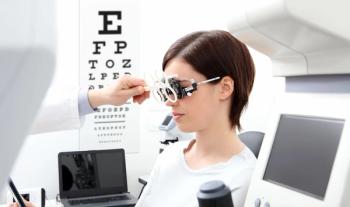
ARVO 2025: Head-scanning training program improves blind-side detection during virtual driving for hemianopia patients
Investigators reported that the benefits of the training for patients with hemianopia, driven by improved blind-side scanning, lasted for more than a month.
Yi Ni Toh, PhD, and colleagues reported that head-scanning training for patients with hemianopia improved the rates of detection of blind-side hazards, speed of detection of blind-side hazards, and safety during virtual driving. She reported their findings at the Association for Research in Vision and Ophthalmology 2025 Annual Meeting in Salt Lake City, Utah.
The investigators, who are from the Schepens Eye Research Institute of Mass Eye and Ear, Department of Ophthalmology, Harvard Medical School, Boston, Massachusetts, also reported that the benefits of the training, driven by improved blind-side scanning, lasted for more than a month.
“The results demonstrated the potential of our novel training to address deficits in blind-side hazard detection,” they emphasized because of the impairments experienced by patients with hemaniopia.
They explained that homonymous visual field loss (HVFL) impairs blind-side hazard detection due to limited visual field,1,2 the compensation for which mandates large head scans to the blind side. However, some patients may fail to scan adequately, which increases the risk of collisions.
A previous pilot study reported that real-time auditory reminder cues to scan promoted larger head movements before arriving at intersections and better hazard detection.3
Clinical trial
A total of 15 patients (median age, 54 years; range, 39-67) participated in this trial. They underwent a preevaluation, 3 training sessions on a driving simulator, and evaluations 1 week and 1 month following their performance on the simulator.
Sixty percent of patients had hemianopia and 40% had quadrantanopia; in 60% of patients, the cause of the HVFL was a stroke.
While using the driving simulator, the participants controlled the speed and steering of the vehicle while driving on city streets. They were tasked with driving with a GPS and honking when they detected a motorcycle. The motorcycles appeared at 38% of intersections on each drive; they approached from the left or right and were visible at an eccentricity between 50 ° and 60 °, Toh recounted.
She reported that the virtual training improved the blind-side hazard detection rate, speed, and safety. Specifically, the training increased blind-side detection compared with baseline (P < .0001); these gains were sustained out to 1 month and approached the participants’ vision level on their sighted side (P > .07).
The speed with which the participants detected hazards also increased on the blind side (P < .001). As with detection of hazards, the improvements in speed were sustained at 1 month and were near to those on the sighted side (P > .09).
The training also improved blind-side detection safety (P < .0001). The gains were sustained at 1 month and approached the levels on the sighted side (P > .4). The investigators defined safe detection as that occurring with sufficient time to execute a safe maneuver.2
The investigators commented, “Training improved the blind-side detection by reducing the scanning errors, ie, failing to scan and not scanning far enough, and increased the scan coverage on the blind side.”
The results conformed to the American Association of Highway and Transportation Officials sight triangle standard, ie, at 40 mph, drivers should be able to see 102 meters (445 feet) down the major road onto which they are turning.
Toh explained that before the participants engaged in training, the blind-side hazards were detected when the scans reached this distance but often missed when they did not. Training increased blind-side scan coverage, calculated by converting the scan magnitude based on the driver’s distance to the intersection at the onset of the scan.
References
1. Bowers AR, Ananyev E, Mandel AJ, Goldstein RB, Peli E. Driving with hemianopia: IV. Head scanning and detection at intersections in a simulator. Invest Ophthalmol Vis Sci. 2014;55(3):1540–1548. doi:10.1167/iovs.13-12748
2. Swan G, Savage SW, Zhang L, Bowers AR. Driving with hemianopia VII: predicting hazard detection with gaze and head scan magnitude. Transl Vis Sci Technol. 2021;10(1):20. doi:10.1167/tvst.10.1.20
3. Xu J, Emmermann B, Bowers AR. Auditory reminder cues to promote proactive scanning on approach to intersections in drivers with homonymous hemianopia: driving with hemianopia, IX.JAMA Ophthalmol. 2022;140:75-78. doi:10.1001/jamaophthalmol.2021.5007
Newsletter
Want more insights like this? Subscribe to Optometry Times and get clinical pearls and practice tips delivered straight to your inbox.
















































.png)


